Petra Collins Says Sorry
|PHILLIP PYLE
“The Young-Girl wants to be recognized not for what she might be, but for the simple fact of her being.” Tiqqun, Preliminary Materials for a Theory of the Young-Girl
The photographer and artist behind the current Issue #45 cover starring Rosalía returns, this time speaking to 032c on the relaunch of her fashion label I’m Sorry for SSENSE.
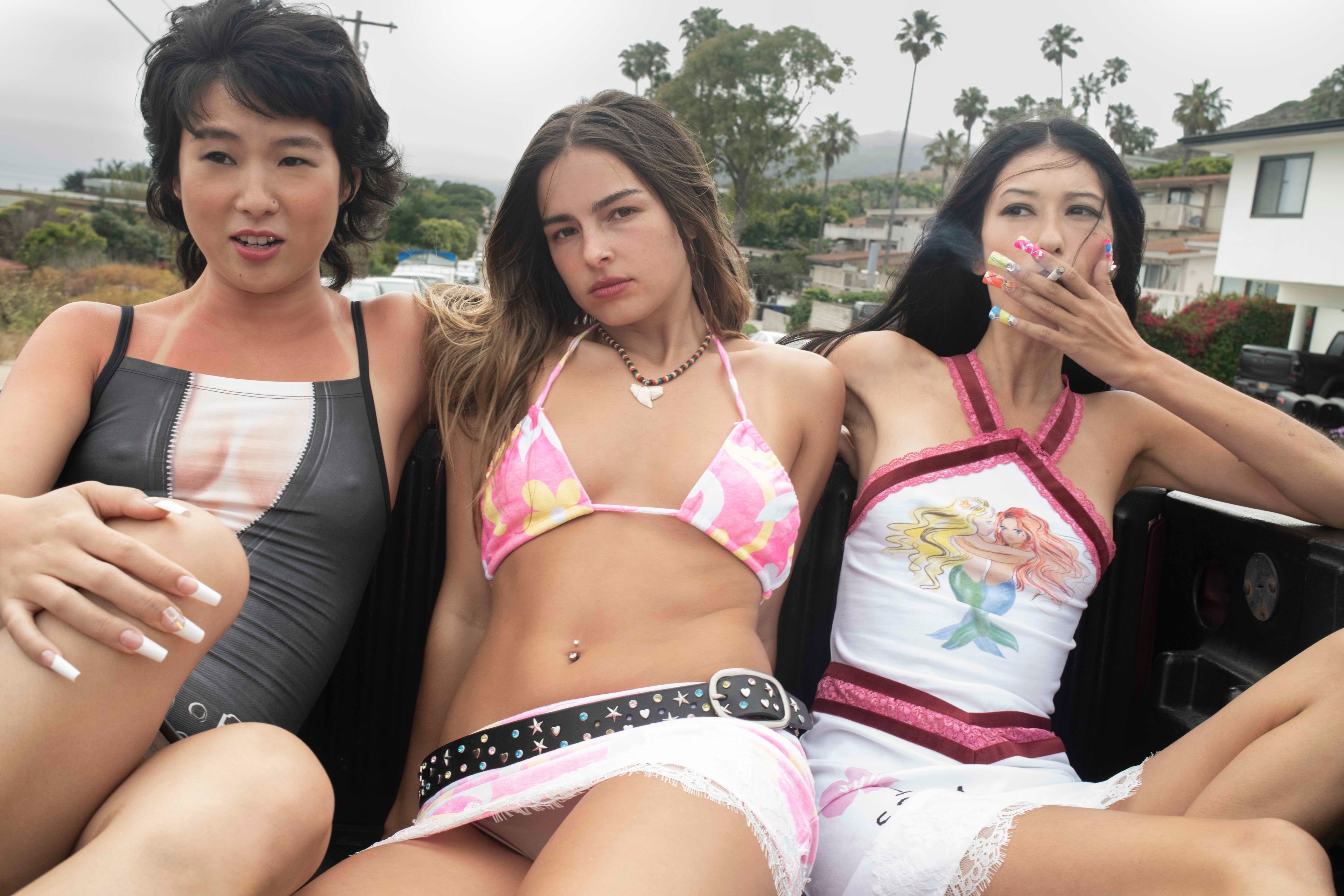
Girlhood no longer belongs to girls. Conventionally attractive men in Hollywood are now deemed “babygirls” and terms such as “girl dinner” have made the transition from online to everyday usage regardless of gender identification. Whether it’s Shumon Basar’s assessment in 032c Issue #44 that the “girl” has “become an enigmatic category all her own” or Alex Quicho’s Wired article entitled “Everyone Is a Girl Online,” it’s clear that femininity has become increasingly susceptible to abstraction in today’s cultural landscape.
Portraying girlhood in the context of its usurpation has been a key concern of artist Petra Collins since she took up photography at 15 in her hometown of Toronto. Known early on for her contributions to Rookie Mag, the online magazine founded by fashion blogger Tavi Gevinson, the LA-based artist has developed a practice spanning fashion and art photography, filmmaking, and music video direction. Her early aesthetic, which has often been subjected to extraction and the retroactive application of aesthetics including “millennial pink,” has itself foreseen a style of the times—a style at first associated with girlishness then uprooted from its origins.
However, as Collins has made clear time and again throughout her practice, the experiences of being a girl or a young woman are much more complex than what those who attempt to imitate her style with formulas of pastels, surrealist lighting, and a soft focus seem to think. For Collins, horror, perversity, and the esoteric are equally central to what it means to be a girl. Through her work with prosthetics, themes of doubling and fetish, as well as the use of props from the world of horror films, Collins renders girlhood with shameless candor.
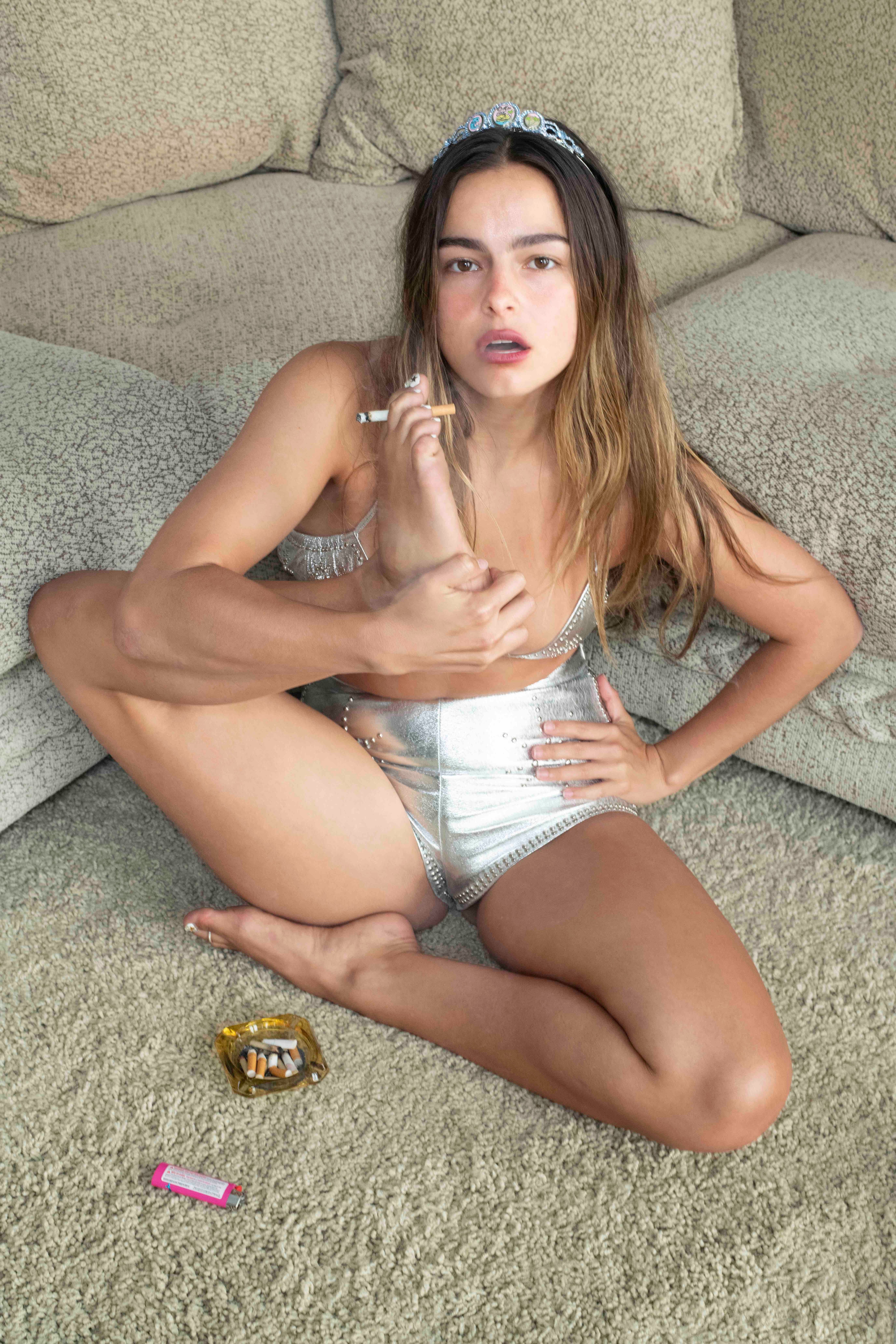
Collins’ interest in the uncanny qualities of girlhood has been translated into fashion with I’m Sorry by Petra Collins, the artist’s collaborative line available exclusively at SSENSE. The relaunch of the line, which was initially debuted in 2020, will be spread out over three drops set for Summer 2024, Fall 2024, and Spring 2025, with each release being made in collaboration with a different designer.
The first drop, out today, was designed in partnership with Mimi Wade, and a future drops with Japanese designer Jenny Fax is currently in the works. In this conversation with Phillip Pyle, Petra Collins discusses the cult and psychoanalytic inspirations behind I’m Sorry, Addison Rae—who stars in a campaign shot by Richard Kern—as the next Britney Spears, and reengaging with the photography style that she first became known for.
PHILLIP PYLE: Like many other young Americans, I first encountered your work through Rookie Mag. What sparked the expansion from fashion photography and filmmaking to design?
PETRA COLLINS: I’ve always followed fashion. As a young person, and during Rookie, I collected so many magazines. I’m also a big clothing collector. I was a local at Value Village in Toronto. It’s the best thrift store in the world. Clothing is so important to storytelling and the image, so it was natural for me to be curious about making clothing. In the beginning of my photography career, I would style my subjects just to make sure they matched the mood or tone of the story I was trying to tell.
It was very exciting to be able to create my own line. It’s such a dream project. How could I say no? A part of my practice is working with other mediums. I’m not saying that I’m a master of all mediums, but I think it’s important to dip into them, to understand what that process is like when I’m working with people who work in other mediums. It’s helpful for me to know the limits. It’s like getting to know another person or another way of life.
PP: You’ve structured things quite differently with the relaunch of I’m Sorry. You’re spreading it out over three drops again, but this time you’re working with a different designer for each one. Could you talk about why you decided to work with these designers in particular?
PC: Designing clothes is obviously not my forte, but I was always interested in curating, and this was a return to that. I was thinking a lot about the I’m Sorry person. Each collection is usually film-based, so if the movie is about this, that’s why the characters are wearing this. We were talking about it being a trilogy, and for each part of the trilogy there’s a different costume designer. These three designers have been my favorites from the early days of Tumblr. They each have totally different styles, but I think they all fit into the I’m Sorry world. They each have their own genre.
With Mimi [Wade], her style is very sugary and cute. But there’s always some twist, something that’s rough or off. She also has a very cinematic vision. She was working with a lot of movie prints in her early work. She did all these movie poster t-shirts. I remember buying one at Opening Ceremony way back when. This freaky shirt. The poster was of a shark attack, but the collar and the sleeves were lace.
I’ve been a fan of Jenny [Fax] since forever. Jen is a little more fashion forward. Her pieces are a little complicated; there’s a slight perversion there and it’s so fucked up in the best way. Her designs are very Japanese, too. She puts a lot of care and time and love into them. For one collection, she made this tooth choker with moth-bitten clothing. Or she’ll do a baby doll dress with a big cut-out. The shoes that she does with MIKIOSAKABE are so wild and audacious, too. Her Instagram is also the best because she posts the craziest things. She should make a meme account.
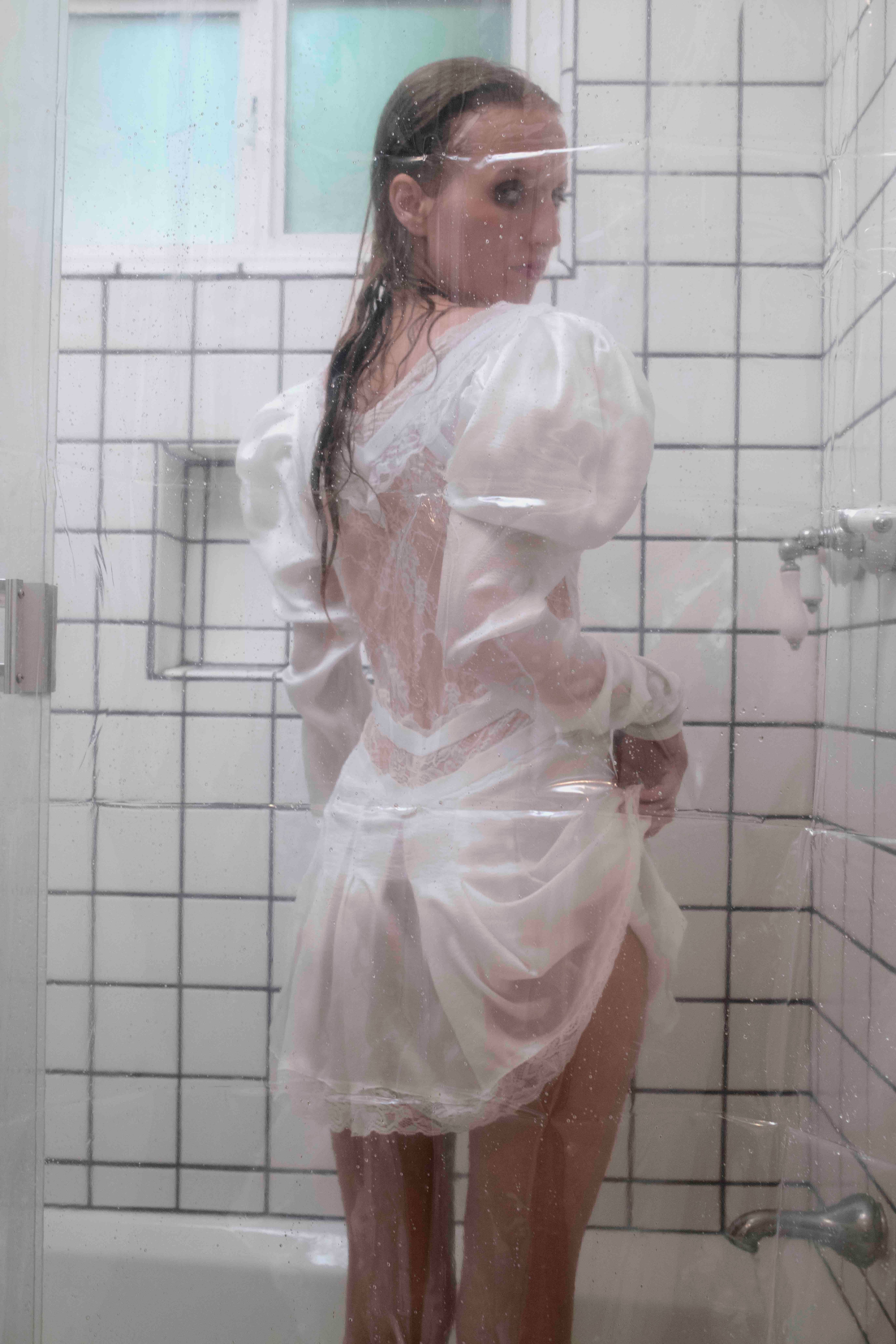
PP: Jenny’s designs have this uncanny quality to them, a girlish surrealism that fits well with your practice. I saw that she’s used prosthetics and digital alteration in some of her editorial images, which reminds me of your work with Sarah Sitkin for the sixth edition of Baron. Are those same psychoanalytic concepts from the Baron project at the forefront of the I’m Sorry relaunch, too?
PC: Definitely. That’s just a big part of my work. I don’t necessarily always come out and say it, but you can tell with every launch.
With the last launch, I was specifically fascinated by cult imagery. The story I formed in my head was of this movie where this girl escapes from a cult. The “Shadow Banned” dress was my favorite from that collection. The stories that I make up can go on and on, but in that one, she gets ousted from the community, and is shadow banned on the internet—but she’s trying to tell her truth.
For this current collection, Jen and I talked a lot about childhood and childhood traumas and how to translate those into clothing.
PP: A secret Addison Rae campaign was unveiled with the relaunch. I’ve been fascinated by her path from TikToker to musician to a kind of alt-associated celebrity. How do you choose which talent to work with? Are you very involved in the casting process?
PC: I’m super involved. I’m always asking who fits. Who is the I’m Sorry person?
Something interesting about her [Addison Rae] is that she comes from this crazy TikTok background. She was very young when she was doing it. It’s this very mainstream, new generation internet thing—and she’s kind of like a child star. Usually, people like that don’t have self-awareness or can’t look back, which is sad, but she’s someone who’s funny and self-aware.She’s perfect for I’m Sorry. She still represents that older TikTok era, which I love and reference a lot in work because it’s very absurdist. When I met her, she had this expansive knowledge—which a lot of young people don’t have—of cinema, books, and fashion. It’s rare. That’s another thing that drew me to her.
I needed to watch every single movie and read every single book growing up. I needed to absorb all of it. I also blame it on how news is structured, and how algorithms are structured today. You are fed things that are only within your interests and aren’t curious outside of that. All of that is to say, Addison is such a curious person. She’s very talented. She’s the next Britney, in the best way.
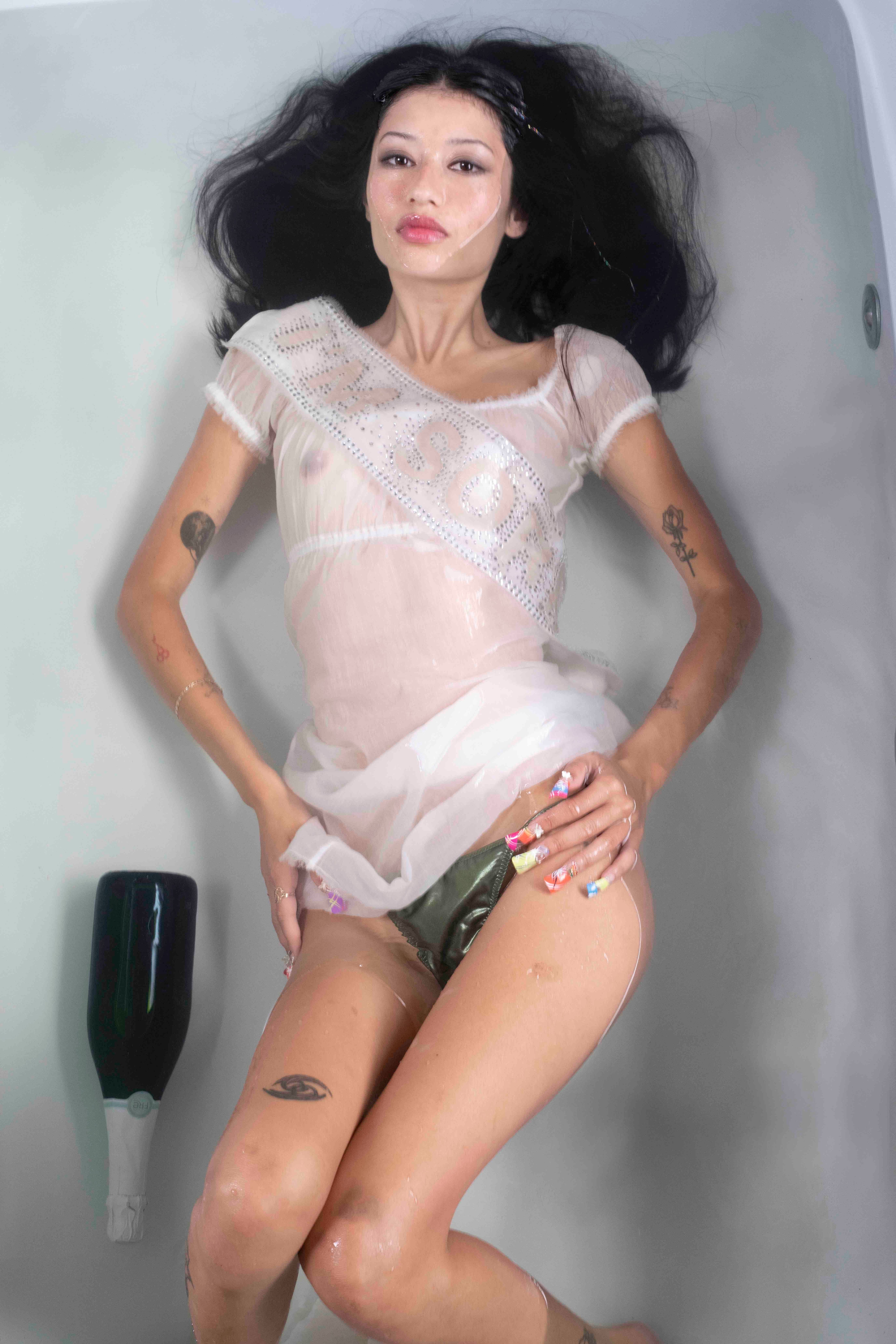
PP: In a past interview with 032c, you said something that really struck me: “We fear the Puritans, yet we have become them.” I’ve been thinking about this because of recent studies indicating that Gen Z is having less sex than previous generations.
PC: It’s becoming more and more puritan. We fake intimacy and sexuality, but I don’t think it’s real. I was talking to someone about this with advertising. I don’t know if it’s a good thing or a bad thing, but we were wondering if sex is taken out of ads now because no one’s interested in that. Sex doesn’t sell.
I think it’s a symptom of being locked down for years, of being alone and not able to see anyone. It’s also because of the internet and being so disconnected. It’s scary because I think that it can move to an extreme and flip into something political.
PP: Like incel culture?
PC: Or just abstinence culture, as in teaching abstinence. Chosen abstinence is totally chill. It’s more like in class, when they’re like, “Abstinence is the only way to not get pregnant.” I think it’s going back to those roots.
PP: You often resist puritanism aesthetically through injecting elements of horror or the grotesque. Is horror still a fruitful genre for you?
PC: It’s a genre that allows so much. It deals with the darkest things, but you can also bring so much light into it. It’s a great way to showcase love and beauty. I think it’s the most cathartic genre. It’s also the most subversive genre. You’re able to tell more of a story and have more of an impact.
I remember I made an aesthetic switch. When making the Baron book and Fairy Tales, I was thinking about reality. What is reality? Especially with living two lives, one in this physical world and one online. I’ve seen such boring cinematic imagery that was trying to be realist. In this day and age, that type of filmmaking or photography cannot stand on its own two feet because everything is so surreal. Someone asked me, “Why did you all of a sudden decide to make that kind of work?” I didn’t realize I was making surrealist work. I was just making what I saw naturally. To me, horror is the realest. Carrie and The Exorcist were like the best coming-of-age movies.
PP: Is catharsis what links your interest in darker themes with safe spaces?
PC: I get a lot of catharsis from making the photos. Do people get that out of looking at them? I don’t know. I hope so. I could say that for myself, but I can’t speak for others.
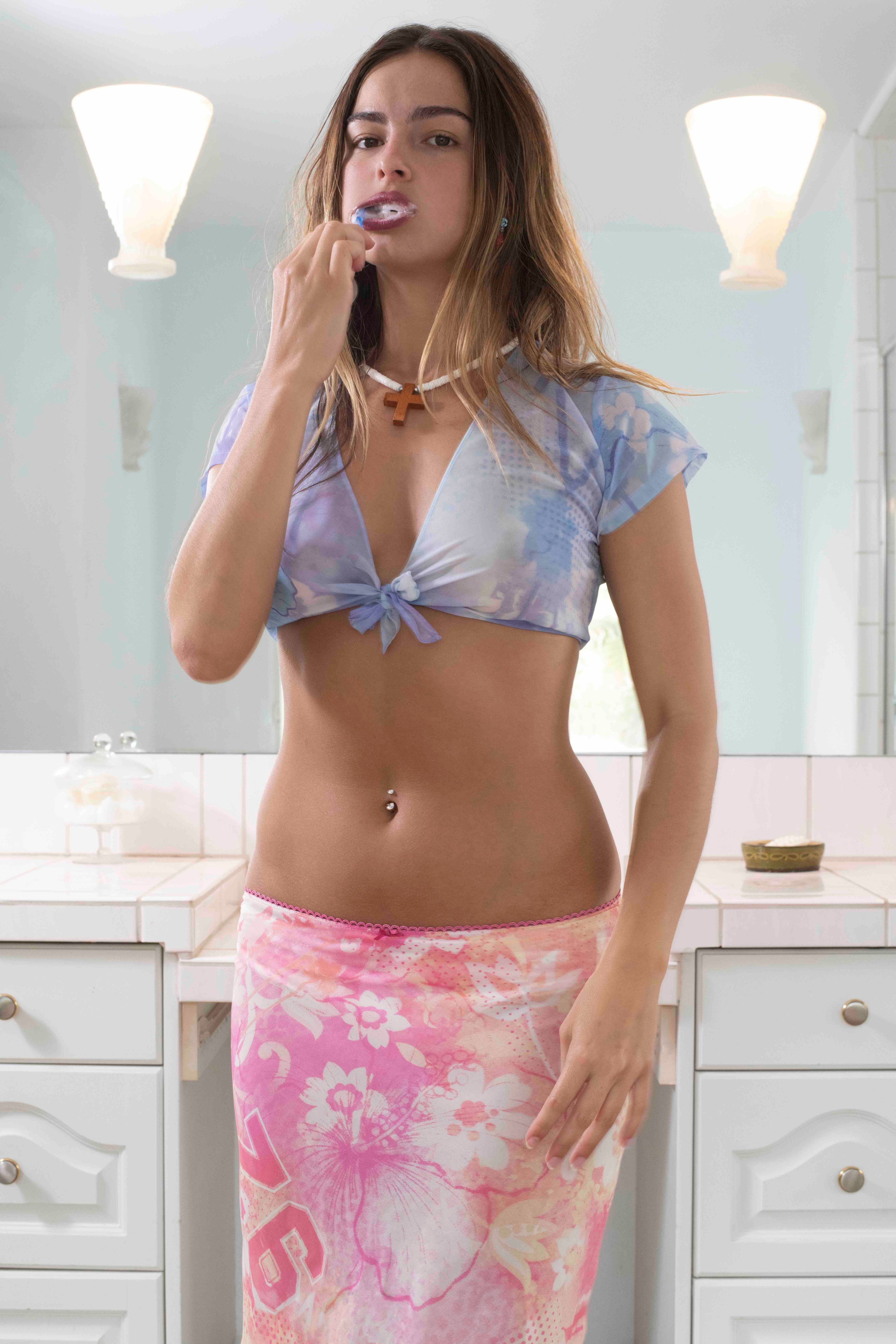
PP: The photos you were taking in the early 2010s not only informed your current style but also helped give rise to an entire aesthetic, one that’s often misunderstood or imitates your own practice. How do you reconcile your personal style with the zeitgeist that it seemed to predict?
PC: It’s so strange. It was powerful that everyone wanted to do it, but it also really pushed me to continue to change or sharpen my visual language. Once something is taken or co-opted, you have to figure out another way to express yourself.
It’s been an interesting thing to reckon with. It’s both flattering and confusing to deal with, but also fun for me now. My style has evolved a lot. I’ve been dipping back into that style of my old work for fun. It’s cool to have this thing that you know how to access if you want.
PP: Is collaboration a way to bolster your work against being coopted or appropriated?
PC: I don’t think you can escape it, especially now. Everyone’s confused, whereas, five or ten years ago, there was an appreciation for an artist’s style or work. Now, we’re in this age where everything’s a reference of a reference of a reference. We’re in the stage of pure simulacra. There’s no knowledge of art. We’re just so far removed from everything.
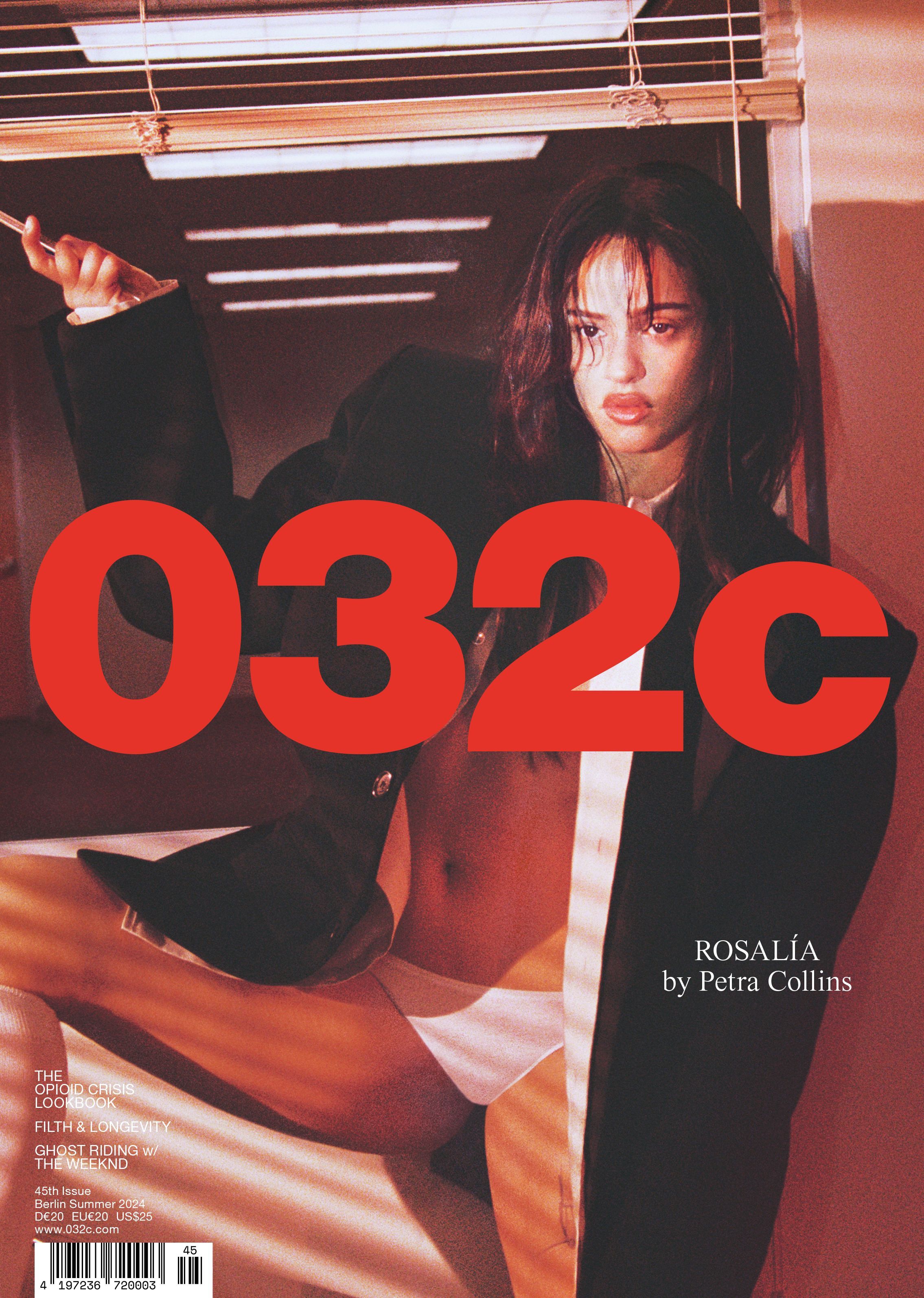
Credits
- Text: PHILLIP PYLE
- Photography: RICHARD KERN
- Creative Direction: PETRA COLLINS
- Art Direction: THOM BETTRIDGE
- Talent: ADDISON RAE
- Fashion: SPENCER SINGER
- Hair: TIAGO GOYA
- Makeup: YUKI HAYASHI
- Manicure: SOJIN OH
- Set: NIAMH HANNIGAN
- Production: CHLOE SNOWER

